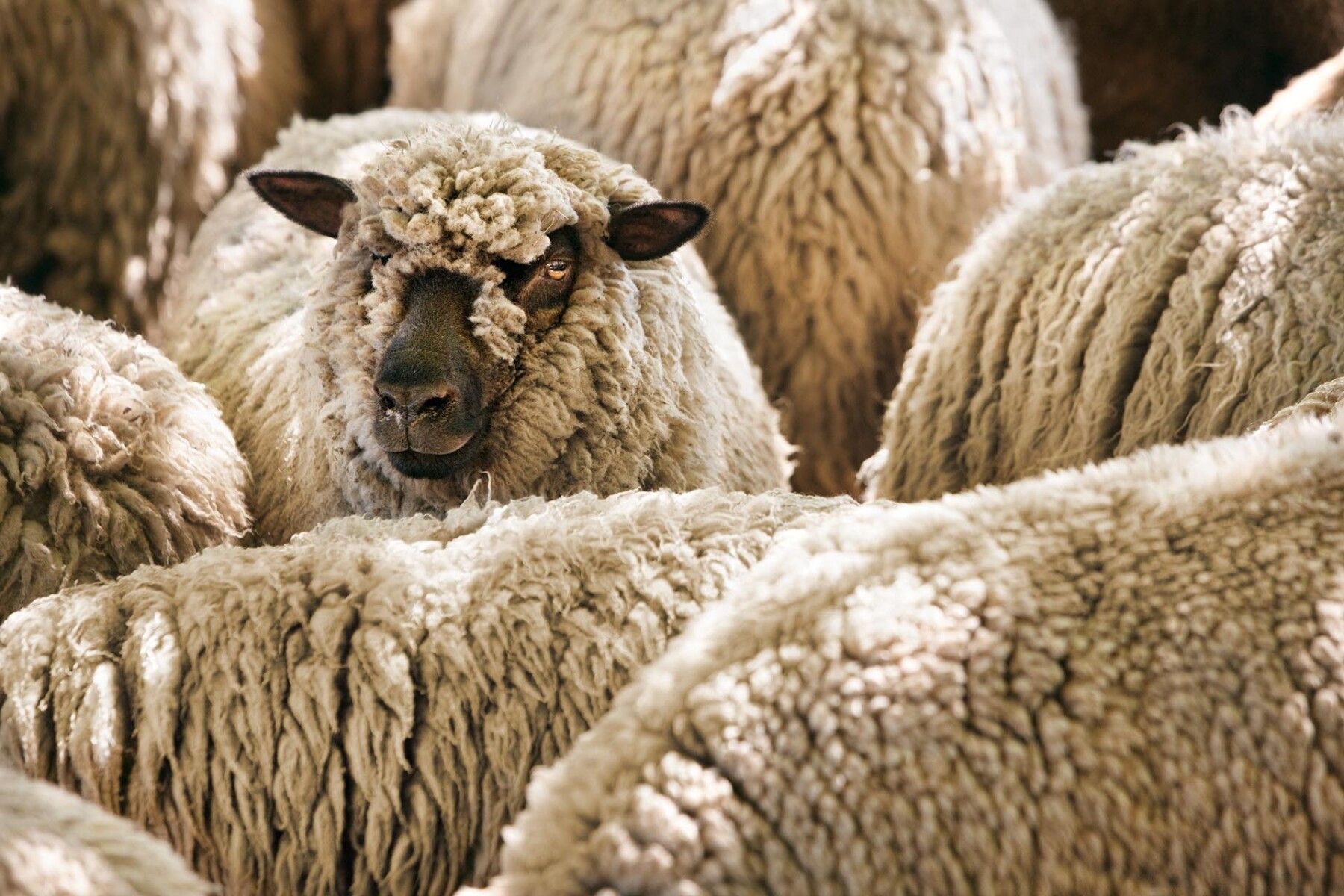People have been keeping sheep for their wool for over 10,000 years. Through the symbiosis of man and sheep, the sheep benefits from man’s protection against predators, and humans receive a raw material from the sheep that keeps them warm and safe. So, it is not surprising that the hair of the sheep’s wool is genetically almost identical to human hair.

It has natural thermoregulating properties. Virgin sheep’s wool is hygienic and self-cleansing.
Interestingly, people today often talk about ‘Nordic sleeping’, i.e., sleeping with goose or duck down and feathers. So, covering oneself with down is a practice that comes from Scandinavia, where the winters are very cold. As a result of the poor insulation of earlier times, bedrooms were very cold, and people needed extremely good insulation. Down is air-proof and waterproof (so that the animal can both fly and swim) and therefore offers the best possible insulation derived from nature. Even today, down jackets provide excellent protection against the cold outside.
In our bedrooms nowadays, even in winter with the window tilted, the temperature rarely drops below 17° C. We can see this as a kind of Mediterraneanizing of the bedroom. Interestingly, people in the warm areas around the Mediterranean traditionally sleep with virgin sheep’s wool. Why? Virgin sheep’s wool insulates less than down. It allows air to circulate, which ensures a comfortable temperature. It is also able to absorb up to a third of its own weight in moisture without feeling damp. This keeps the sleeping climate pleasantly warm – it doesn’t get too hot, while remaining dry.
Sleeping with virgin sheep’s wool (or any other natural hair such as camel’s hair etc.) means no more sweating, but also no more freezing!
But it doesn’t end there: untreated virgin sheep’s wool also has the enormous advantage of being self-cleansing. How does this work? Under the microscope, you can see the scaly structure of the wool hair. As a result of this, the smallest particles of dirt are caught in the wool. When you air the bed in the fresh air, i.e., in contact with oxygen, the scaly structure unfolds. When it is lightly shaken, all dirt particles escape during airing and the duvet and overlay are hygienically clean again.
Wool has natural thermoregulating properties. The inside of the fibres absorbs water vapour, while the surface repels water.
Virgin sheep's wool in Hüsler Nest bedding
The wool collection is primarily classified according to wool category and colour. Category A (no belly and leg hair) of all white sheep, which is primarily suitable for bedding, is therefore collected. The white Alpine sheep accounts for the largest proportion. We use the same wool for all Hüsler products, so there is no difference between overlay, duvet or pillow fillings.
Information on allergies
Wool hair and human hair are genetically almost identical. Through thousands of years of symbiosis between humans and sheep, we humans have adapted in a great many ways. We don’t have a problem about clothing ourselves with virgin sheep’s wool and covering ourselves with it while we sleep.
Accordingly, genuine allergies to virgin sheep’s wool are extremely rare. However, people often react to the chemical treatments that are frequently found on virgin wool – washability treatments, bleaches and optical brighteners, synthetic re-greasing and dyeing. In addition, fungicides, herbicides, and pesticides like Eulan and Miltin are unfortunately also found as mite protection in mattresses.
Many people have allergic reactions to all these substances, not to the wool itself. They then mistakenly think they have a sheep wool allergy. We have also found that due to the constant contact with the agents described above, many people (especially children) react with a hypersensitive immune system – in other words, they are allergic to a whole range of substances. If the mattress that has been treated in this way is got rid of, the various symptoms often disappear. With Hüsler Nest overlays and duvets (made of untreated virgin sheep’s wool), you can be sure of having an absolutely natural product. They reduce the risk of an allergic reaction to practically zero. Let’s go on to talk about dust mites. People with a dust mite allergy only react to the droppings of the tiny animals. The mites feed on human skin scales. We need to be able to clean our bed in such a way that it no longer provides food for the mites. Therefore, we recommend that you not only air your wool overlay regularly, but that you use two sets of overlays. You can use one, while airing out the other and storing it. Then change the overlays every week. Another possibility is to use our washable cotton linen blankets and overlays.